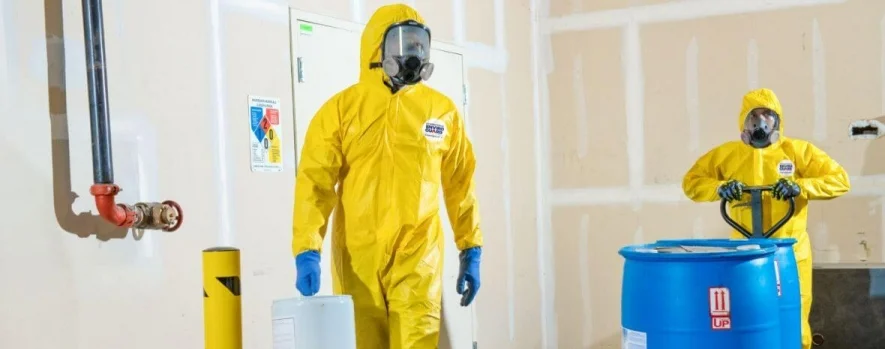- Know Everything About Nipah Virus, Which Is Back In Kerala Again
- Kevin Porter Jr Arrested On His Girlfriend’s Assault Charge
- Market Change Overnight - Know The 8 Things That Did It
- Who Are Alba Baptista And Chris Evans Married On The Weekend?
- Disrupted India vs Pakistan Asia Cup 2023 Match on Reserve Day
- 10 Common Foods That Contain No Calories or Are Very Low in Calories
- Men’s Styling Tips - Know the 9 Common Style Mistakes to Avoid
- Coco Gauff Beats Karoline Muchova and Reaches the US Open Final
- Danny Masterson Gets Life Sentence of 30 Years for Two Rapes
- Experience A Splendid Vacation in Kashmir with These 15 Gorgeous Sights
- India
- Wednesday , April 24, 2024
- Last Published Sep 12, 2023, 6:48:32 PM

Chemical protective clothing for safety and environmental health
Chemical protective clothing is protective clothing that is used in the workplace to protect workers against chemical products. The purpose of chemical protective clothing is to protect or insulate people from the chemical, physical and biological hazards that may occur during dangerous materials operation. It should not be considered as an alternative to appropriate handling and safety engineering practices. In today’s world, soldiers on the battlefield and employees in various industries are exposed to various chemicals that are dangerous causing a lot of health problems much leading to death. Occupational health and safety professionals view Chemical protective clothing to be the last line of defense to protect people against chemical and physical hazards. The chemical protective clothing used today is made from non-fermentable materials. Chemical protection is obtained by blocking their penetration through the fabric in clothing. It is an effective method to provide adequate protection to professionals against contact with toxic chemicals. The total obstruction of penetration and permeation can affect the transportation of heat and moisture generated by the wearer causing heat stress and low efficiency in the workplace. One potential solution for this problem is to produce non-fermentable and breathable clothing. Chemical protective clothing has all these requirements without adversely affecting human activities. It is primarily used by soldiers in the war. One of the most dangerous chemical hazards is that it affects humans based on how it enters the body. So, people use chemical protective clothing for safety and environmental health.
General uses of chemical protective clothing:
- Specifically treated wool and cotton clothing are fireproof and comfortable
- Heavy fabric protects against cuts and contusion of heavy, pointed or rough material.
- Leather protection from dry heat and flames.
- Rubber protects acids and chemicals.
- Synthetic materials are easier to catch fire.
- Disposable paper-type material coveralls protect dusty materials.
- Disposable or reusable fluid or vapors protective suits should assess on a case-by-case basis.












